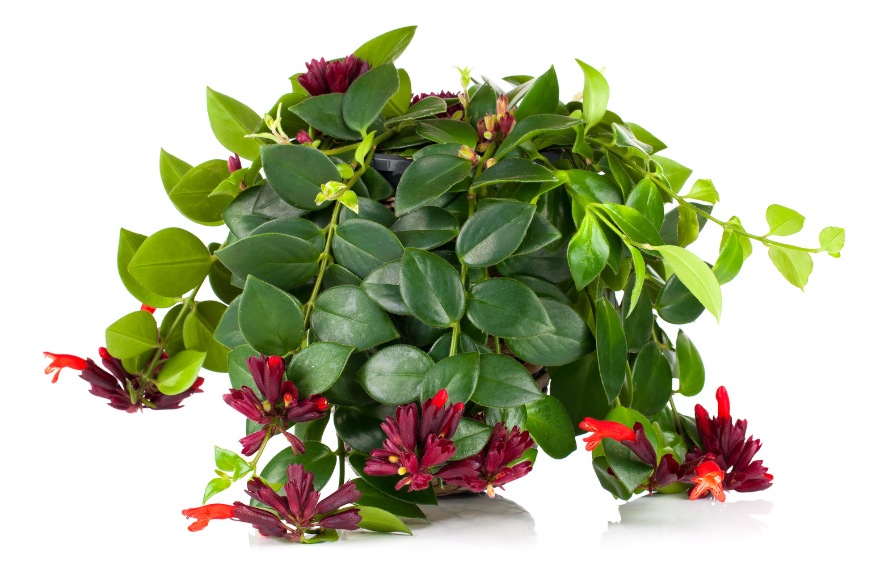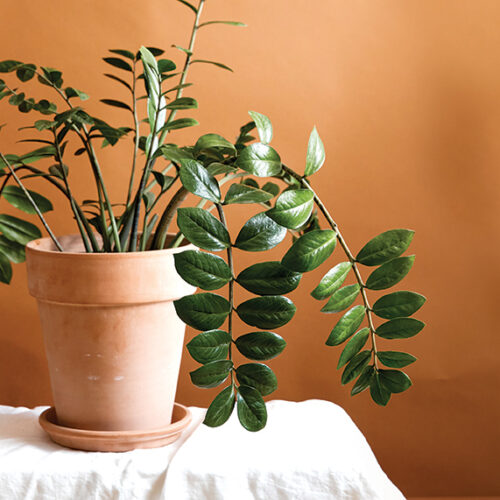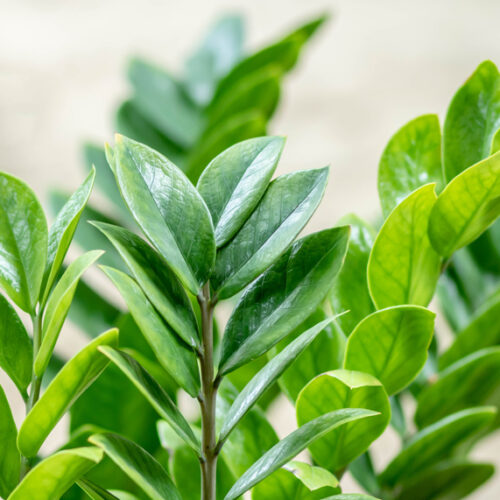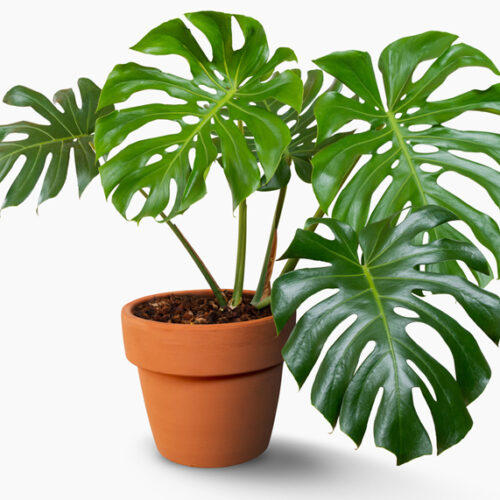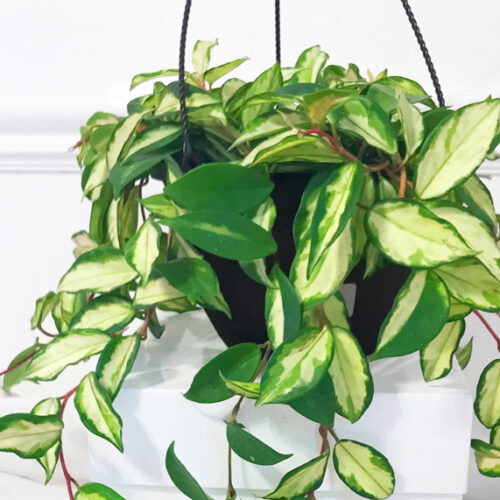Lipstick plant
2025-08-25T09:55:08+10:00
With trailing stems and vibrant tubular flowers, lipstick plant is a striking addition to any indoor collection.
If you’re looking for a house plant that brings colour, character and a little bit of drama, the lipstick plant might be the one for you. Named for the cute, quirky blooms that emerge like little tubes of bright red lipstick, Aeschynanthus radicans is a trailing plant with small, glossy green pointed leaves that looks fabulous spilling out of a hanging basket or cascading from a stand. Or place it on a buffet, side table or shelf so its stems drape over the edge.
Lipstick plant varieties
For those who love variety, there are A. radicans cultivars with pink or orange flowers, as well as a variety with curly leaves that add an extra layer of texture. If patterned foliage is more to your liking, consider the Black Pagoda lipstick plant, a cultivar of Aeschynanthus longicaulis, which has mottled green and purple leaves alongside orange blooms.
Care and maintenance
In the right conditions, the stems can grow up to 1m long, making it a dramatic statement piece. Indoors, position in a spot with bright, filtered light. While it can tolerate lower light levels further into the room, flowering may be reduced. If blooms are lacking, try moving it to a brighter location.
Feed during the warmer months with an indoor plant fertiliser (controlled-release or liquid, depending on your preferred feeding routine). Water when the top 2.5–5cm of potting mix feels dry, ensuring the water drains through the bottom of the pot.
This plant also appreciates a little extra humidity, especially in air-conditioned or heated homes. Place the pot on a tray of pebbles and water to help maintain a humid environment. Pruning isn’t necessary but can help to keep the plant tidy if the stems get too long or unruly.
In warmer climates, the lipstick plant can also be grown outdoors in a sheltered, frost-free location that receives dappled light. Just be sure to protect it from direct afternoon sun and cold snaps.
Pests and diseases
The plant is generally not bothered by pests or diseases, making it a low-fuss addition to your indoor collection. On occasion, it may fall prey to the usual house plant culprits, such as aphids or mealy bugs, but these pests can be managed with a horticultural oil or insecticidal soap.
Header image credit: Shutterstock

